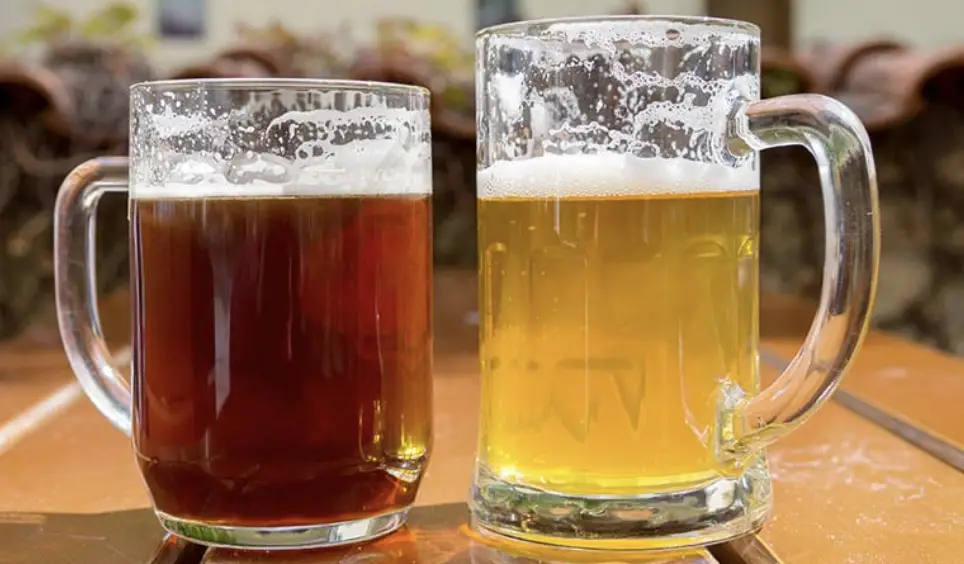
Understanding the Difference between Lager and Ale: Unraveling the Two Pillars of Beer
When it comes to the world of beer, two dominant categories stand tall as the pillars of brewing: lagers and ales. While both are beloved by beer enthusiasts worldwide, these two styles possess distinct characteristics that set them apart on the taste spectrum. In this blog post, we’ll embark on a flavorful journey to explore the key differences between lagers and ales, unraveling the fascinating world of fermentation that gives rise to these beloved brews.
- Fermentation Process:
The primary difference between lagers and ales lies in their fermentation process. Both styles are brewed from four primary ingredients: water, malt, hops, and yeast. However, the yeast strains used in fermentation differentiate the two.
Lagers: Lager yeasts are known as “bottom-fermenting” yeasts. They operate at cooler temperatures, typically between 44 to 55°F (7 to 13°C). During fermentation, these yeasts settle at the bottom of the fermentation vessel. This results in a slower and more extended fermentation process, which contributes to the crisp and clean taste characteristic of lagers.
Ales: Ale yeasts are referred to as “top-fermenting” yeasts. They thrive at warmer temperatures, usually between 60 to 72°F (15 to 22°C). As the name suggests, ale yeasts ferment at the top of the fermentation vessel, leading to a faster fermentation process compared to lagers. This often results in a more complex and fruity flavor profile.
- Temperature and Maturation:
The distinct fermentation temperatures give rise to unique maturation processes for lagers and ales.
Lagers: After fermentation, lagers undergo a conditioning phase known as “lagering,” during which the beer is stored at near-freezing temperatures (32 to 45°F or 0 to 7°C). This extended maturation allows the flavors to mellow and smooth out, creating a refreshing and clean taste.
Ales: Ales typically require a shorter maturation period than lagers. Once fermentation is complete, ales are often conditioned at slightly warmer temperatures (50 to 59°F or 10 to 15°C). The shorter maturation period allows for the retention of more robust and pronounced flavors, resulting in the diverse taste profiles commonly found in ales.
- Flavor Profile:
The different fermentation and maturation processes lead to distinctive flavor profiles for lagers and ales.
Lagers: Lagers are known for their clean, crisp, and refreshing taste. They often exhibit subtle malt sweetness and balanced bitterness from the hops. Lagers are widely appreciated for their smoothness and easy-drinking qualities.
Ales: Ales boast a wide range of flavors, from fruity and spicy to bold and hoppy. The use of various ale yeasts, malt varieties, and hop combinations creates a diverse array of taste experiences, ranging from the refreshing citrus notes of an IPA to the rich caramel undertones of a brown ale.
Conclusion:
In conclusion, while both lagers and ales are brewed from the same core ingredients, their distinct fermentation temperatures, maturation processes, and yeast strains create vastly different taste experiences. Lagers offer a clean and refreshing character, thanks to cooler fermentation and extended maturation, while ales boast a rich and diverse flavor spectrum, facilitated by warmer fermentation and shorter conditioning.
The next time you raise a glass of beer, take a moment to appreciate the artistry behind both lagers and ales. Each style showcases the craftsmanship of brewers and the endless possibilities that arise from the magical world of fermentation. Whether you prefer the crisp drinkability of a lager or the complex flavors of an ale, both styles contribute to the vibrant tapestry of beer culture, delighting taste buds and bringing joy to beer enthusiasts around the world. Cheers to lagers and ales, the dynamic duo that continues to quench our thirst for flavor and creativity!






